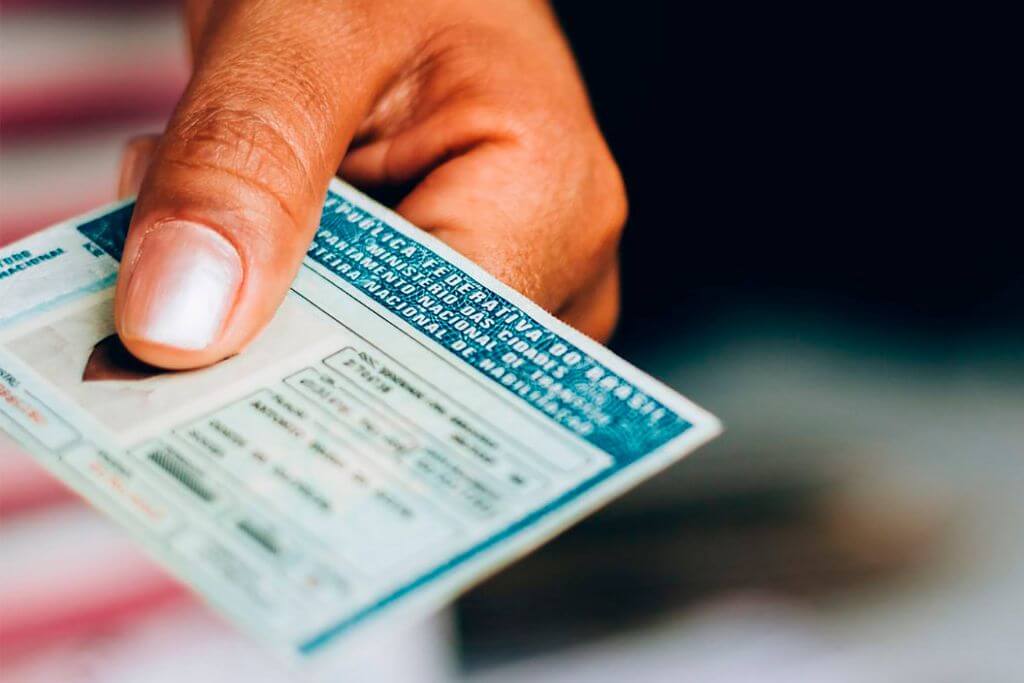Find out all about PIS PASEP, including how to consult and withdraw your money, which may have been forgotten for a long time.
Adverts
If you're a salaried worker, you've probably heard of PIS PASEP and sometimes wondered what it is, how it works and what it's for. You should know that this is a very common question, and because you're not aware of it, you may have money saved up and not even know it. So we've put together some information for you.
The PIS (Social Integration Programme) and PASEP (Public Servant Equity Training Programme) are programmes created in 1970 with the aim of strengthening the relationship between employees and employers, as well as promoting better income distribution in Brazil.
The main difference between PIS and PASEP is that the former is aimed at private sector workers, and the latter at civil servants. In 1975, both were merged into a single PIS PASEP Fund, whose resources go to the FAT (Workers' Support Fund).
Adverts
PIS PASEP registration is required for every employee in their first job under the CLT regime. The number generated is unique and valid for life, even if you change jobs. Workers in private companies must inform their employer of their PIS number in order to deposit FGTS, while civil servants use PASEP.
As a result, when companies and public institutions pay tax contributions, workers are entitled to benefits such as the Severance Indemnity Fund (FGTS) and unemployment insurance.
It's important to know that workers with a formal contract, in both the public and private sectors, are in theory entitled to the PIS PASEP salary allowance. However, in order to receive the benefit, you need to fulfil some specific criteria (which we'll describe further on).
Knowing more about PIS PASEP means that workers are aware of this important income supplement programme, since this initiative seeks to contribute to the financial security and well-being of Brazilian workers, promoting the integration and socio-economic development of the country.
Read on to find out more about what PIS PASEP is, how it works, who's entitled to it and who isn't, and how to check yours!
Quick Index:
What is PIS PASEP
PIS PASEP is a combination of two government programmes that aim to provide an additional income benefit for Brazilian workers.
These programmes are linked to tax contributions made by private companies and public institutions. By paying these contributions, employees are entitled to rights such as FGTS and unemployment insurance.
You might be interested:
- Antivirus: Is it worth investing in one?
- McAfee Antivirus: Is it worth it?
- Norton Antivirus: protect your devices
Thus, when workers get their first formal job, they are automatically enrolled in PIS PASEP, with a unique number for life, which is a prerequisite for accessing, for example, the FGTS and the Salary Allowance.
It's important to know that PIS PASEP is not deducted from salary, and it is the employer's duty to provide it. So, in summary, the programme aims to supplement income and encourage worker participation.
PIS
PIS, the Social Integration Programme, was set up in 1970 with the aim of promoting the integration of private sector employees with the growth of the companies they work for. It seeks to strengthen the bond between employee and employer and also contribute to a fairer distribution of income in the country.
PASEP
PASEP, the Public Servant Equity Formation Programme, was also created in 1970 with the aim of establishing a fund for public sector employees.
Through this programme, municipal, state and federal employees can participate in the results of public bodies, allowing them to have benefits and incentives similar to those in the private sector.
What is the difference between PIS and PASEP?
The main difference between PIS and PASEP is who they are for. While the PIS is aimed at private companies, which pay contributions to provide benefits to private sector employees. PASEP is exclusively for public sector employees.
Another difference between them relates to the organisations responsible for paying the benefits. PIS is administered by Caixa Econômica Federal, while Banco do Brasil manages PASEP payments.
Remember that if the worker works in both the public and private sectors, they must be registered in both programmes.
In 1975, Complementary Law No. 26 unified the PIS and PASEP programmes to form the PIS PASEPs Fund, the proceeds of which are sent to the Workers' Support Fund - FAT - which helps finance Unemployment Insurance and Wage Allowance.
The FAT can also be used to finance BNDES programmes.
Who is entitled to PIS PASEP
In theory, workers with a formal contract, whether in the public or private sector, are entitled to the PIS PASEP salary allowance, but they must fulfil certain criteria, such as:
- Have been registered with PIS PASEP for at least five years.
- Have worked for a legal entity for at least 30 days in the base year considered for calculating the benefit. These days can be consecutive or not.
- During the base year of calculation, the worker must have received an average salary of up to two minimum wages.
- The worker's details must have been correctly entered by the employer in the RAIS (Annual Social Information Report) or in eSocial (the government's online platform where employers must keep all the information about their employees up to date).
In addition to workers who fulfil the above requirements, other categories also have the right:
- Company employees with 5 years of PIS PASEP registration;
- Pensioners;
- Elderly people over 60;
- Disabled people;
- Military police reservists;
- People with malignant neoplasms;
Who is not entitled to PIS PASEP
Even if the worker fulfils all the requirements mentioned above, there may be some impediments to receiving the salary allowance.
One of the reasons for losing the benefit is if the PIS PASEP number is not registered on the digital labour card. In this context, for example, the worker must ask the company to include the registration number.
However, other groups of workers cannot benefit either:
- Domestic workers;
- Urban and rural workers employed by individuals;
- Workers employed by individuals treated as legal entities.
It is essential to emphasise that employers must declare their workers' details correctly.
Any discrepancies in the information may result in the PIS PASEP not being released, even for those who fulfil the other criteria established. Therefore, accurate data is essential to guarantee receipt of the benefit.
How to check your PIS PASEP
To check your PIS or PASEP, you need your identification number. In the case of the PIS, the number is the same as the NIS (Social Identification Number) and the NIT (Worker Identification Number).
PIS or PASEP numbers can be found on the following documents:
- Labour card;
- Statement of Guarantee Fund for Length of Service (FGTS);
- Citizen card and Caixa Econômica Federal branch (for PIS);
- Banco do Brasil branch (for PASEP), presenting ID and CPF.
You can also obtain your PIS or PASEP number via the CNIS (National Social Information Registry) website by following these steps:
- Visit the CNIS website (cnisnet.inss.gov.br).
- Select the "Citizen" icon.
- In the "Registration" tab in the top left-hand corner, click on "Affiliated".
- Fill in the personal information requested, such as full name, mother's name, date of birth and CPF.
- When you click on "continue", you'll find your NIT number, which is the same as your PIS or PASEP number.
Once you have your PIS PASEP number in hand, you can check it on the government's own website by following these steps:
- Visit the Federal Government and select the "Receive Salary Allowance" service.
- Click on "Start" to be directed to the Emprega Brasil Portal.
- Log in with your gov.br details (CPF and password). If you don't already have an account, register.
- On the home page, select the "Salary Allowance" option.
- Check that the base year is correct and authorised, in this case the year is 2021.
- If you are entitled to receive payment, the "Payment Amount" and the date of availability will appear on the screen.
If the information does not appear, it is necessary to check that the worker fulfils all the prerequisites for receiving the PIS PASEP salary allowance.
How PIS PASEP is calculated
The amount of the salary allowance will never exceed one minimum wage. It is calculated on the basis of the months worked by the employee in the base year, which in this case is 2021. The formula for the calculation is as follows:
Minimum wage ÷ 12 (months of the year) x number of months worked
For example, if a worker worked for 6 months during the base year, and the minimum wage is R$ 1320.00, they will receive 50% of that amount, and so on. Remember that in 2023, the base year is 2021. So if you worked all 12 months in 2021, you'll receive the maximum amount of the minimum wage.
Practical example of a worker who has worked for 6 months:
R$ 1320.00 ÷ 12 (months of the year) x 06 months worked = R$ 660.00 (amount you will receive)
It is important to note that payment will be made by Banco do Brasil S.A. and Caixa Econômica Federal, according to article 2 of Law No. 7,859:
How to request PIS PASEP withdrawals
Step-by-step instructions for withdrawing PIS PASEP contributions:
- Check the balance available for withdrawal on the "My FGTS" app, on the FGTS website (fgts.gov.br) or on Caixa's internet banking, if you are an account holder.
- In the "My FGTS" application, select the option to request the withdrawal and transfer the balance to your current account, if you prefer.
- If you want to withdraw in person, make sure you have up to R$ 3,000 to withdraw from the following options:
- Caixa branches;
- Self-service terminals (using the Citizen Card);
- Lottery shops;
- Caixa Aqui Correspondents.
- If the amount exceeds R$ 3,000, the withdrawal must be made at a Caixa branch.
- When making a withdrawal in person, take an official photo ID with you, regardless of the amount.
By following these steps, you'll be able to withdraw your PIS PASEP contributions easily and conveniently.
Pay attention to calendars and deadlines
For better organisation, there is a calendar released every year which aims to clarify and inform you of the dates for withdrawing PIS PASEP. These dates are based on the employee's birthday.
Check out the 2023 calendar:
Requesting a withdrawal from a deceased worker
To withdraw the PIS of a deceased worker, the person who is the legal beneficiary must follow the steps below:
- Go to any Caixa Econômica Federal branch.
- Present your valid identification document.
- Provide the death certificate of the deceased worker.
- Present one of the following documents, depending on the situation:
- Certificate or declaration of dependents entitled to a death pension issued by the INSS;
- Certificate provided by the employer (in the case of public servants);
- Court authorisation appointing the successor/legal representative and the successor/legal representative's identity card;
- Formal de Partition/Public Deed of Inventory and Partition;
- A written declaration from dependents or successors, by mutual agreement, stating that there are no other known dependents or successors and requesting the withdrawal, regardless of inventory, over-allotment or judicial authorisation.
By following these guidelines and presenting the necessary documentation, the legal beneficiary can withdraw the deceased worker's PIS at a Caixa branch.
Conclusion
In short, PIS and PASEP offer significant benefits to Brazilian workers, both in the private and public sectors.
By providing an important income supplement, such as the salary allowance, the PIS PASEP contributes to improving the quality of life of workers, encouraging them to participate in the results of companies and public institutions.
In addition, by promoting income distribution and strengthening the relationship between employees and employers, these programmes play a fundamental role in the country's socio-economic development, seeking to guarantee the financial security and well-being of citizens.
You may be interested:


















